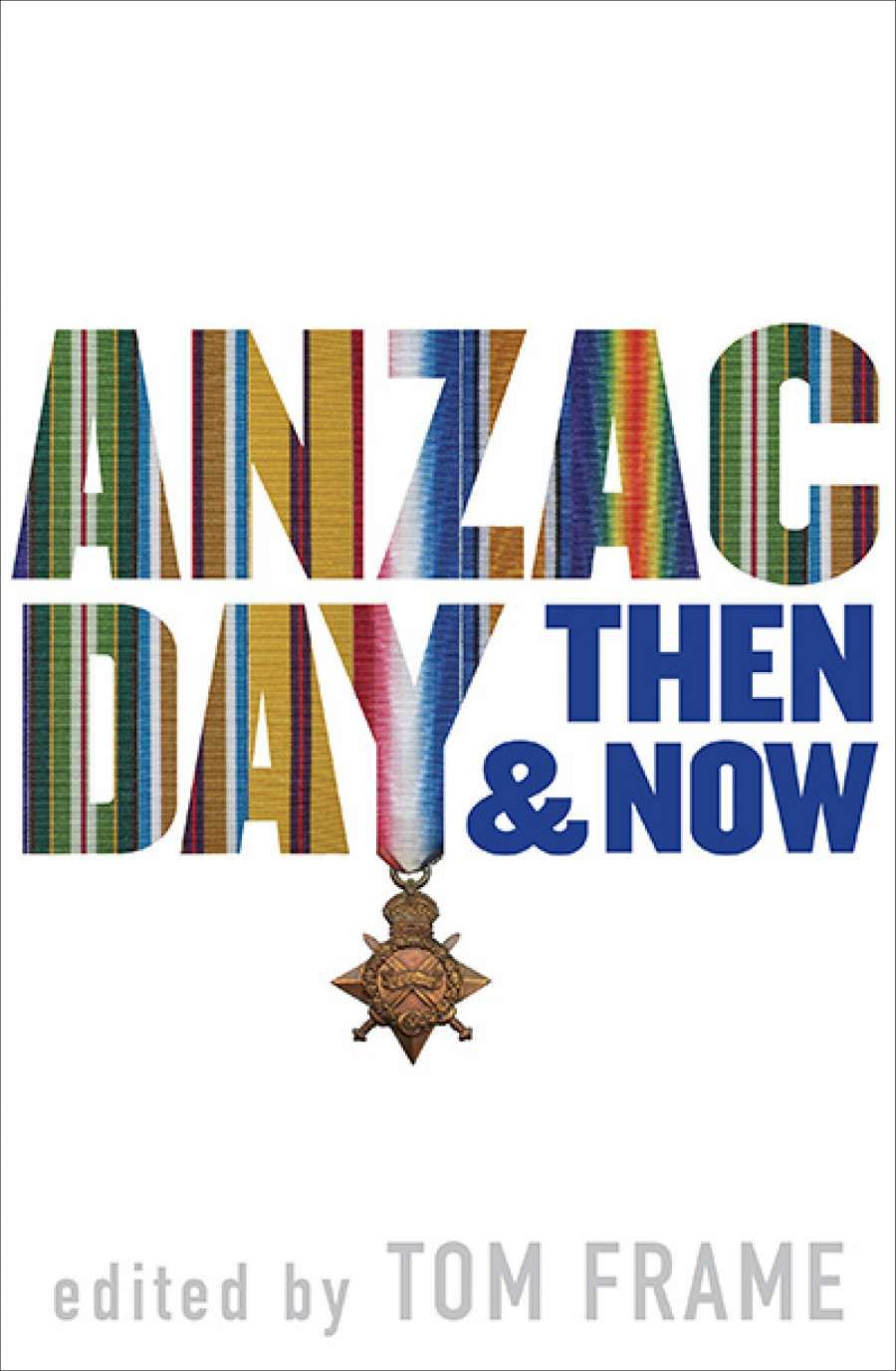
- Free Article: No
- Contents Category: Australian History
- Custom Article Title: Seumas Spark reviews 'Anzac Day Then and Now' edited by Tom Frame
- Review Article: Yes
- Online Only: No
- Custom Highlight Text:
I hazard a guess that more books are published on Anzac – the day, the legend, the myth – than on any other subject in Australian history. The least of these ...
- Book 1 Title: Anzac Day Then and Now
- Book 1 Biblio: University of New South Wales Press $39.99 pb, 310 pp, 9781742234816
As the title indicates, the focus of this book is Anzac Day itself. Tom Frame notes in his introduction that the collection is intended to stimulate debate and questions about an occasion at risk of 'descending into empty sentimentality or being hijacked for nationalistic propaganda'. He adds that his aim in this regard is not that of a 'leftist cultural warrior' or 'enemy of Anzac' – the language of conservative commentators Miranda Devine and Mervyn Bendle – but that of someone concerned about the direction of Anzac Day commemorations and the bombast, hubris, and untruths that increasingly cloud its ceremonies. The fact that Frame – a former naval officer, Anglican Bishop to the Defence Force, and member of the Council of the Australian War Memorial – feels the need to offer this defence reflects the extent to which public discussion of Anzac has been diminished by banal and absolutist rhetoric: you are either with us or against us, Australian or unAustralian. To ask questions about Anzac Day, to investigate its meanings and limitations, is not to decry its relevance or importance.
In a fitting editorial touch, the first chapter in the collection belongs to Ken Inglis, the scholar who has done more than anyone to explain the rituals and significance of Anzac Day. For nearly sixty years, Australians wanting to learn more about Anzac have turned to him as guide. Inglis reflects on his interest in Anzac commemoration, how its forms have changed since his first publication on the subject in 1960, and the evolution of his idea that Anzac might constitute for Australians a substitute or civil religion. As well as being a fine read, the chapter provides a platform for other contributions that consider the ways in which Anzac commemoration incorporates the sacred and the profane.
Anzac Day Then and Now covers a broad range of topics, some of which are fresh and unfamiliar, no easy thing with regard to Anzac. The authors honour their editor's pledge to encourage discussion and prompt questions. Especially lively and engaging chapters include those by Michael Gladwin on military chaplains and their role in shaping Anzac commemoration; Tom Frame on the reasons for, and significance of, singing hymns on 25 April; Carolyn Holbrook on the ways in which politicians have moved from the margins to the centre of Anzac ceremonies; and Peter Stanley and Robert Nichols on the word itself – Anzac or ANZAC? In separate chapters, Heather Neilson and Christina Spittel consider the history, merits, and controversies of Alan Seymour's seminal play The One Day of the Year (1958). Both contributions are stimulating, but inevitably there is repetition. Here the editor should have intervened. And Frame might have asked for more polish from certain contributors. This book emerged from a conference and some chapters retain the form of a paper to be read to an audience. While no edited collection can be expected to cover every subject, a chapter dedicated to the 'nz' in Anzac would have been a good addition. There is a tendency among Australians to ignore New Zealanders' claims on Anzac. What this says about Australians is worth exploring.
 Australian War Memorial, Canberra (via Wikimedia Commons)
Australian War Memorial, Canberra (via Wikimedia Commons)
Printed in the appendices are the words of some poems and hymns that have been used in Anzac Day commemorations. These appendices, which complement the chapters of Jeff Doyle and Frame, give a fascinating glimpse into Anzac language and the development of the distinctive idiom heard at ceremonies around Australia each April. The inclusion of these appendices makes the omission of an index all the more curious. An index would have been welcome. So too tighter proof-reading. The many typographical errors and instances of missing and misplaced punctuation are a distraction. The presentation of Anzac Day Then and Now does not match its stirring contents.
The manner in which Anzac Day has been commemorated and understood has never been uniform or immutable. Perhaps Anzac's most remarkable characteristic has been its ability to accommodate different, sometimes contradictory, messages. Is Anzac Day an occasion for solemn reverence or an almighty piss-up? Is it a day for the men and women who fight or the families of those killed in war? Anzac Day has been all these things and more, as this book reveals in vivid fashion. Whether Anzac will remain open to different interpretations, to contest and change, is harder to answer. Ever more people commemorate Anzac Day but in fewer and less diverse ways; in recent years voices and practice have grown more similar, more nationalistic, more ordered by a phoney sense of history. Is this what we want? This is the question at the heart of this book.


Comments powered by CComment